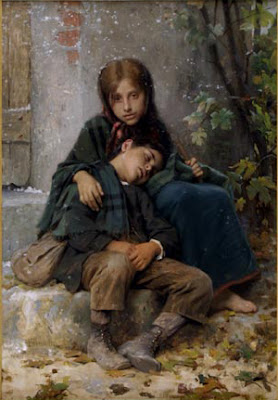How can she be gone when there’s so much work still to be done?
| Grain elevators, Buffalo, by Carol L. Douglas. |
I can’t remember when or why I first met Helen McCombs, but I do remember who introduced us: Dr. Jennifer Kruschwitz. That a self-described former gangbanger would know an optics professor is surprising, but Helen was like that. She also called Pennsylvania’s lieutenant governor, John Fetterman, her friend.
Helen was excitable, easily angered, and wrote in the worst pidgin English. At the same time, she had a penetrating intelligence. She’d been coded as ‘learning disabled’ as a kid. It’s more likely that she was traumatized.
 |
| First Ward, Buffalo, by Carol L. Douglas. |
“You really don’t think I’m stupid?” she’d often ask me.
“No, but I think whoever gave you that high school diploma really ripped you off,” I’d answer.
She took an entrance exam for community college and failed dismally. We hatched a remediation plan, starting with basic arithmetic. I gave her homework and she did it faithfully. She consumed western history voraciously. Her reading and writing skills improved with exposure to great literature.
You can’t work with someone that closely and not become good friends. Helen was a newly-hatched Christian, so we started reading the Bible together. Two chapters a night, week by week, month by month, year by year. Let God speak for himself, I reasoned.
And he did. Helen began to look at ghetto life in a different way. We had long discussions about anger and forgiveness, in particular. Swearing and yelling and getting mad was cultural, she told me. “No matter what you call it, it’s sin, and it’s self-destructive,” I’d counter.
| North Rochester, by Carol L. Douglas |
Go ahead and accuse me of cultural imperialism. But if you’d listened to her agonize over the violence and loss in her daily life, you might feel differently. The blood feud is alive and well in inner-city America. It manifests itself in casual killings that have become so routine that we no longer even notice them.
My pal Cuevas Walkerdoes. He ministers in Rochester, NY. Every few months, he’ll mention that he knew the victim of whatever homicide ticked up the numbers that day. It always brings me up short.
Even worse than not noticing is the idea that it’s no big deal if gangbangers all shoot each other. That’s terrifically judgmental. Each of them is invested with the same miraculous gift of life as you and me, and we don’t know what history brought them to that dismal end. (Also, gangbangers are constantly missing and hitting unintended targets, including my goddaughter’s family restaurant on Monday.)
 |
| Heart of Darkness, monotype, by Carol L. Douglas |
For these communities, the message of forgiveness and reconciliation is the only hope. Everything else we’ve tried has failed.
In the last few years, the Holy Spirit began to move in Helen. Several months ago, her nephew-by-marriage died by tainted drugs. The community began to mobilize in its usual tiresome way, with accusations and recriminations that threatened to spill over into violence. In the past, Helen would have been the first to break a few heads. Instead, she counseled peace.
Helen died Monday, unexpectedly, alone, and way too young. How can she be gone, I thought, when there’s so much work still to be done? That is one of life’s unanswerable questions.








